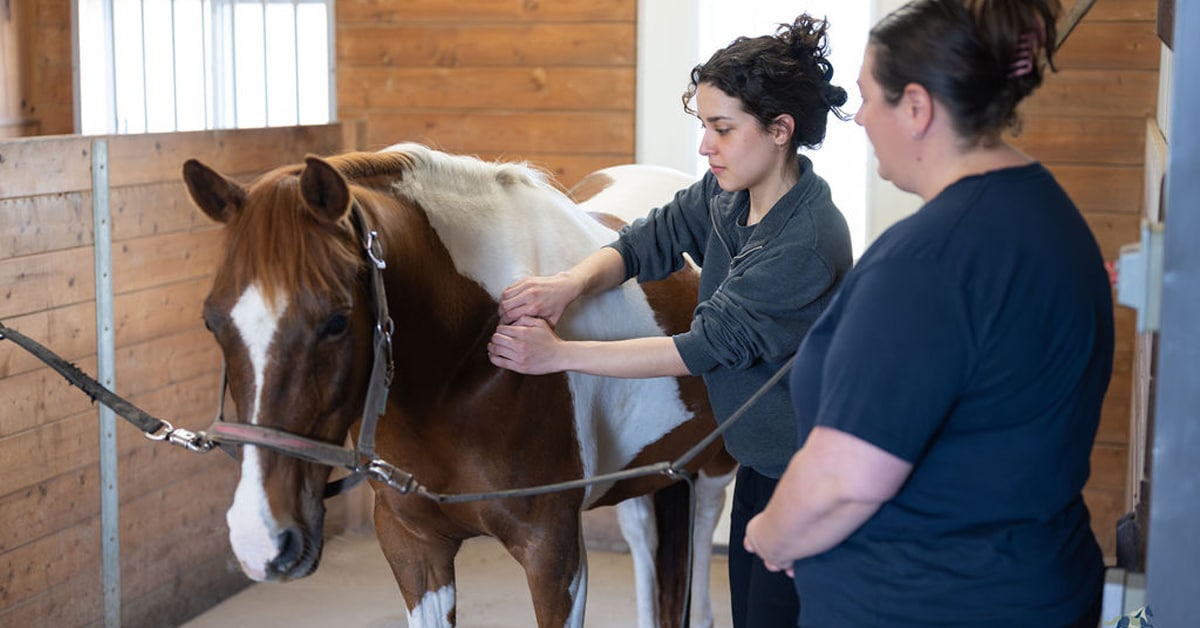To achieve a good halt, you have to remember that it’s a movement ridden from the leg to the hand. In the halt we’re looking for a horse to become engaged, with its hind legs up underneath the body, and to step underneath itself as it comes down to the halt. We want the horse to carry itself into the halt and not lean or lose its balance forward as it slows down. The halt is really done from the hind end and in a correct halt, the horse ‘sits’ into the transition.
To prepare for the halt, first step into a nice deep heel, lengthen the leg, and be sure there is contact happening all the way through thigh to heel. The rider should grow taller in the saddle, take a deep breath, and then with support from the leg close their fingers on the reins to finish the halt. The leg and body are involved as the first steps to ensure that the hind legs are active and up underneath the horse; it’s not until the final stages that contact on the mouth comes into play, with the fingers closing lightly on the reins.
I like to think of the halt as the ‘ultimate’ transition. It is handy for educating young horses and to reinforce the fact that they need to remain between hand and leg. I find it a good way of helping my students discover whether they’re pulling through the transition or not. Most often a horse gets to the end of the transition and wants to stand, but if the rider is pulling, their reaction is to step backwards. As an education for horses it’s just another transition, but it teaches them where the hind end is. As an education for the rider, it helps you know how well the horse is responding to your aids.
When schooling the halt it is important to note that you shouldn’t be going from a trot to a reverse. The halt should be considered a separate exercise and separate transition. In a test situation such as an equitation class, I would rather see quality in the transition rather than promptness, but accuracy is important as well. I don’t ever want to see yanking or pulling; it’s not an exercise in strength, but in accuracy of the aids.
If the horse understands what you’re asking it can be quite easy. It is when something is not communicated well that you get into pulling and wrestling, so preparation is key. The rider should prepare for the halt by looking ahead, but be sure to finish jumping the jump that precedes the halt, as the horse still needs the freedom through the jump with a good release to land balanced. Grow tall upon landing, half-halt a couple of strides prior to let the horse know something is going to happen, and further prepare by making better shape out of your body prior to the transition.
Riders cannot be stronger than their horses. When they start to pull harder, that’s an argument they’re bound to lose. A common flaw I see are riders who allow their lower leg to come shooting out in front in a bracing position, as the leg should be engaging the hind end. Uneven hands or any yanking and seesawing motion will also be ineffective in keeping the horse straight.
A rough halt should never be used as punishment. It’s a transition the same as any other transition and it’s an opportunity where you can help to educate and clear up communication with your horse. As always, temper and emotion should never be involved in the training process.”
The Latest









